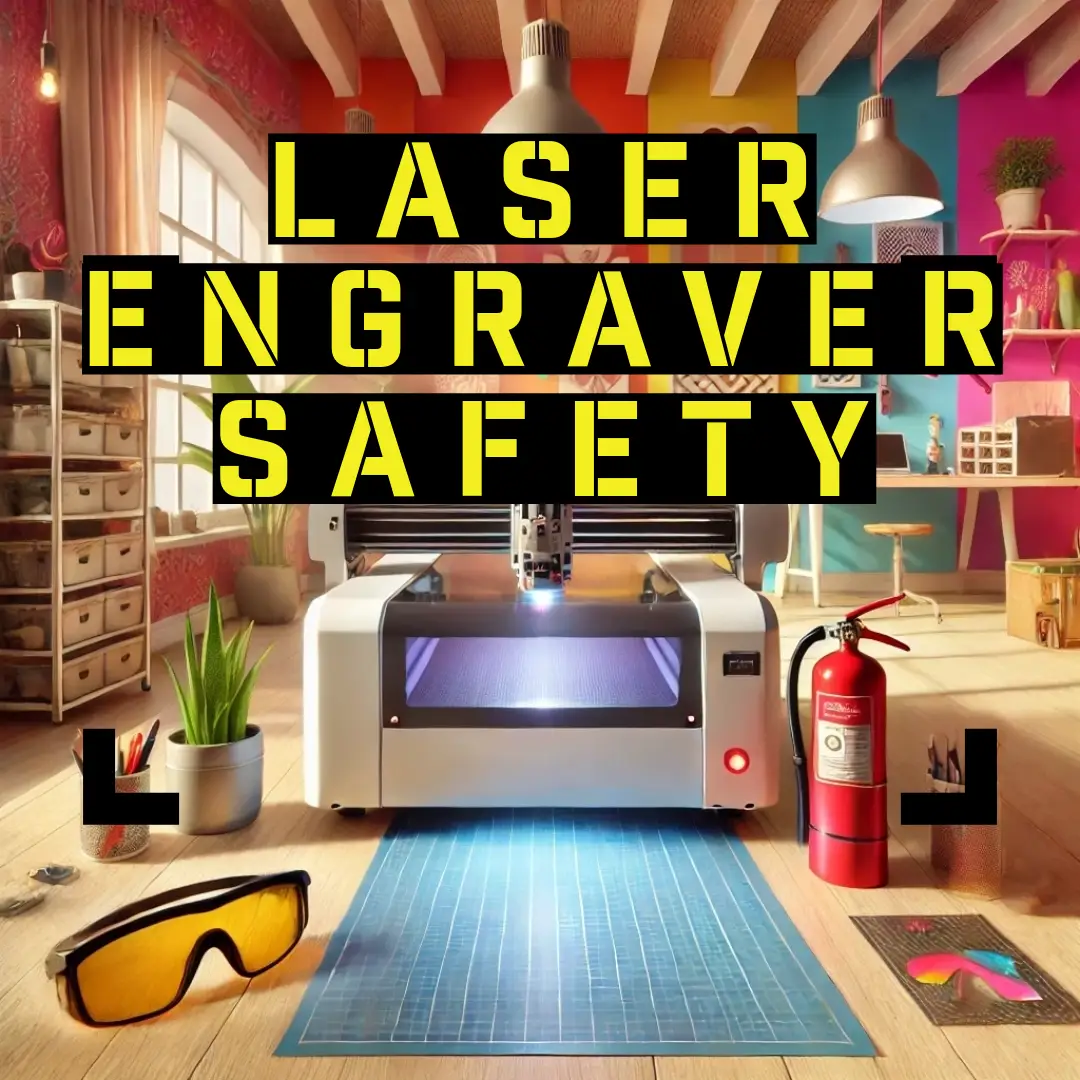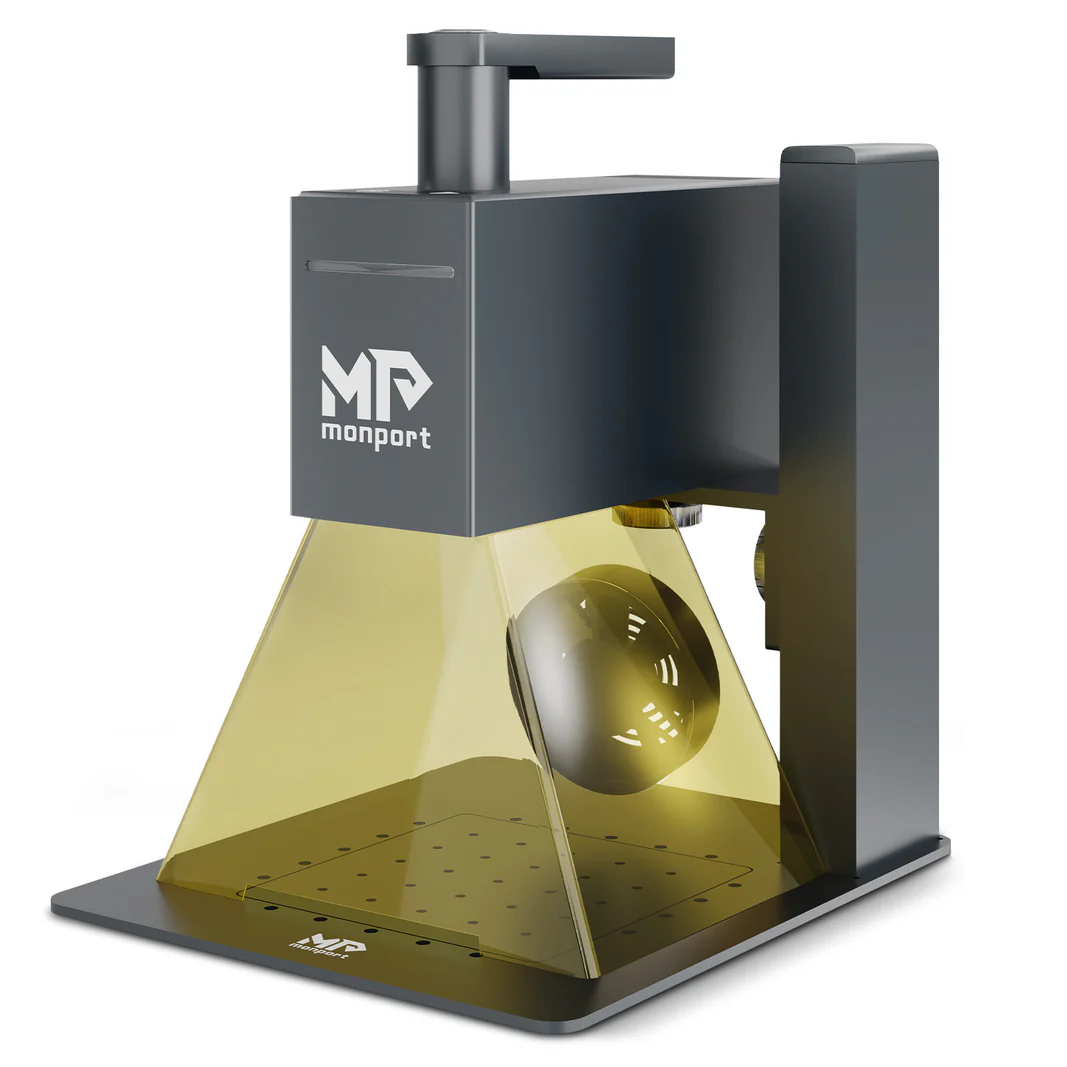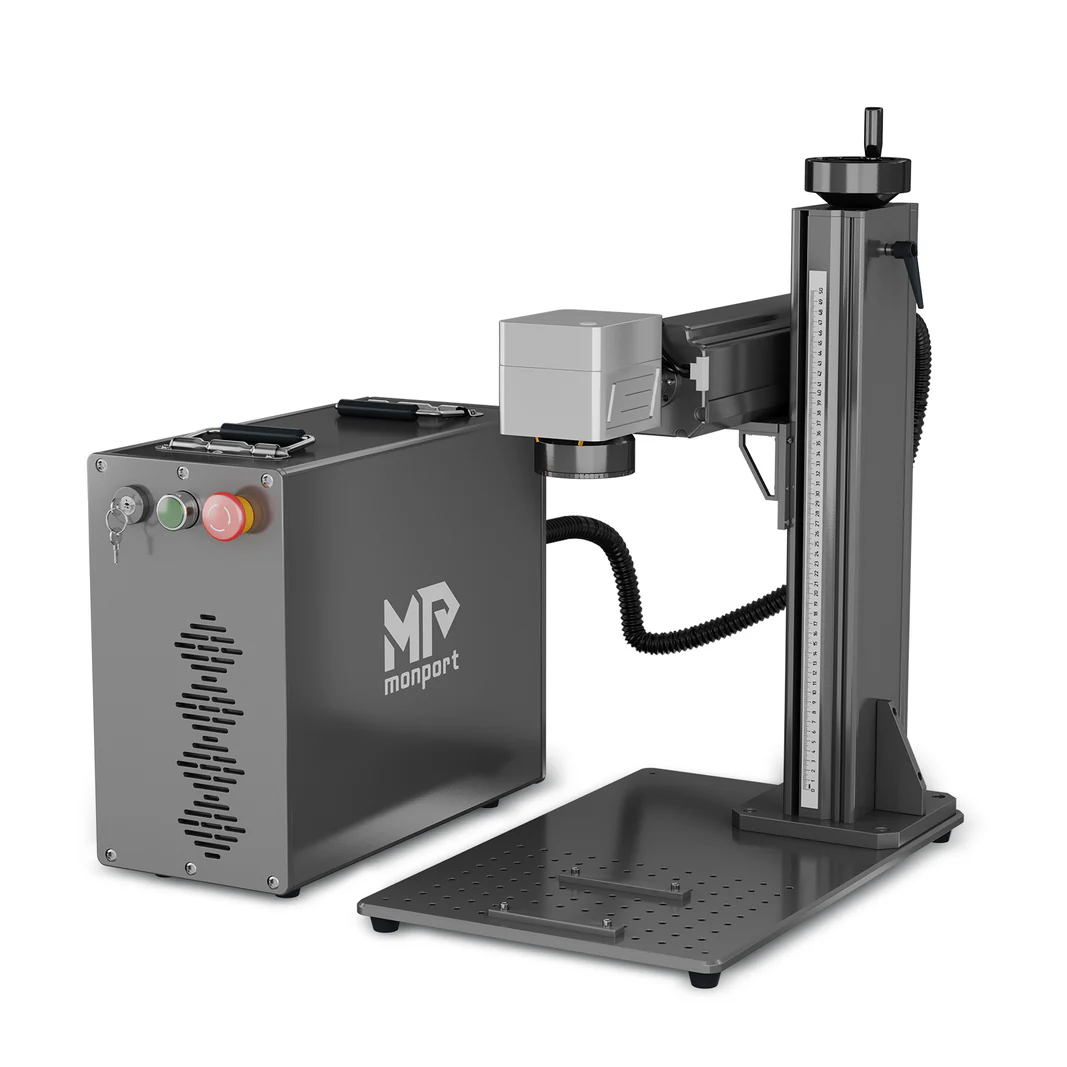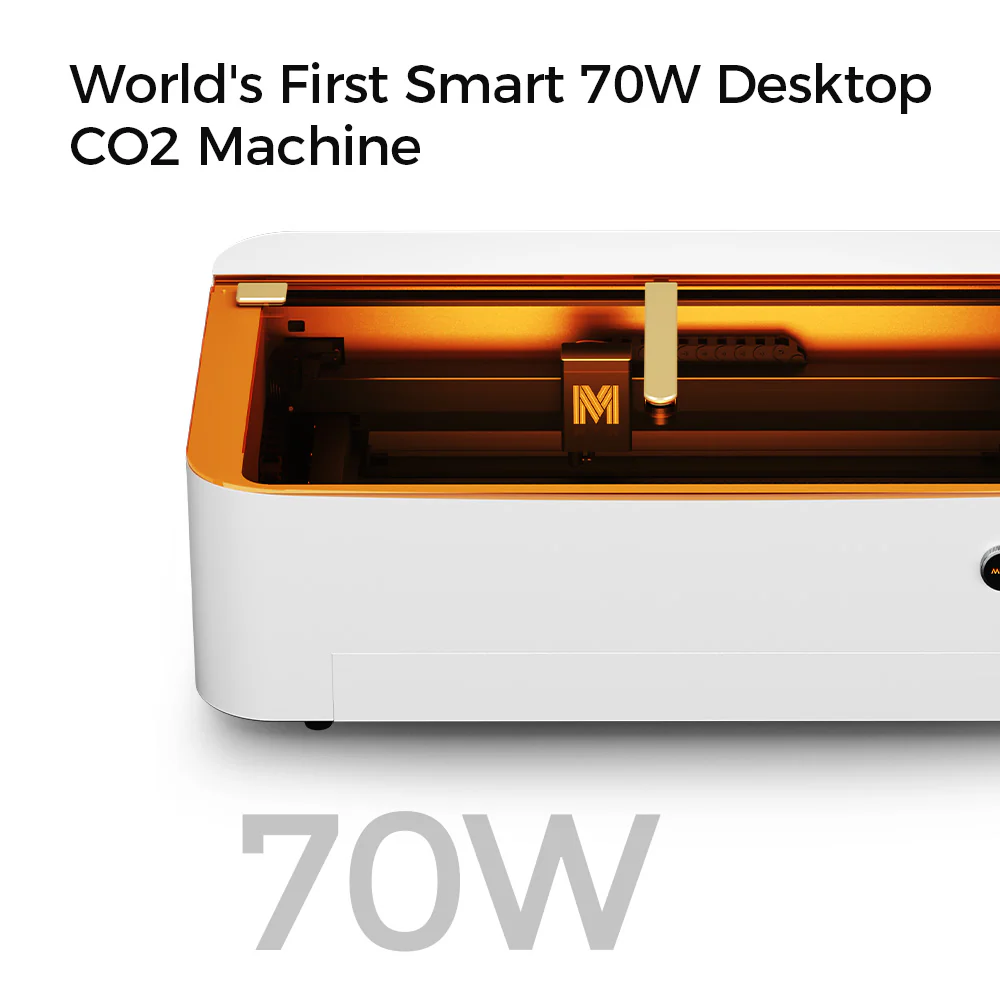Laser Engraver Safety: Essential Tips for Safe and Creative Home Engraving

Welcome to the exciting world of home laser engraving! This creative hobby allows you to add personal touches to your projects with precision and style. However, safety should always come first. Enthusiasm for creating can sometimes overshadow important precautions, but practicing laser engraver safety ensures both enjoyment and peace of mind.
In this guide, we’ll cover essential tips to help you work safely and confidently in your creative space. Let’s keep your engraving journey both inspiring and safe!
Understanding the Basics of Laser Engraver Safety
Using a laser engraver at home is exciting and creative, but it requires careful attention to safety. Understanding laser safety basics is key to protecting yourself and those nearby. This includes knowing laser types, identifying potential hazards, and following all manufacturer guidelines. Let’s explore the essential principles of staying safe while engraving.
Types of Lasers Commonly Used in Engraving
Laser engravers come in different types, each tailored to specific materials and applications. Understanding these types is essential for choosing the right machine and ensuring safe operation.
CO2 Lasers
CO2 lasers are widely used for engraving non-metal materials such as wood, acrylic, leather, and glass. They are efficient, versatile, and produce high-quality results, making them a favorite among hobbyists and professionals.
Fiber Lasers
Fiber lasers are ideal for engraving metals, such as stainless steel and aluminum. They are known for their precision, speed, and ability to handle intricate designs. These lasers are popular in industrial and high-performance applications.
Diode Lasers
Diode lasers are more affordable and commonly found in entry-level engraving machines. They work well on lighter materials like paper, soft wood, and fabric. This type is perfect for hobbyists or small-scale creators.
Each laser type has unique features and safety considerations. It’s crucial to understand their operating principles and potential hazards to use them safely and effectively.
Recognizing Potential Hazards of Laser Engraving
Laser engravers are powerful tools, but their improper use can pose significant risks. Understanding these hazards and taking preventive measures is crucial for maintaining safety in your workspace.
Eye Injuries
Direct exposure to laser beams can cause severe eye damage, including permanent vision loss. Even scattered or reflected laser light can be harmful. Protective eyewear rated for your laser’s wavelength is essential to shield your eyes. Always avoid looking directly at the laser beam, even if it’s low-powered.
Skin Burns
Laser beams emit intense energy capable of causing severe burns upon direct contact. This risk increases with high-powered lasers. Always keep your hands and skin away from the beam path, and never attempt to adjust the machine while it’s active.
Fire Hazards
Materials like wood, acrylic, and fabric can ignite when exposed to laser energy. Ensure proper ventilation and closely monitor the process to prevent fires. Never leave the machine unattended during operation, and keep a fire extinguisher nearby for emergencies.
Toxic Fumes
Engraving certain materials, such as plastics, vinyl, or painted surfaces, can release toxic fumes or particles. Inhaling these fumes may lead to respiratory issues. Always operate your laser engraver in a well-ventilated area or use a proper fume extraction system to minimize exposure.
Electrical Hazards
Laser engravers involve high-voltage components that can pose an electrical risk if improperly handled. Avoid opening the machine’s casing, and ensure all connections and wiring are intact. Regular maintenance is essential to prevent electrical malfunctions.
Mechanical Injuries
Moving parts within a laser engraver can pose a risk if proper precautions are not taken. Avoid reaching into the machine while it’s active, and keep loose clothing, hair, or jewelry away from moving components to prevent accidents.
Material-Specific Risks
Certain materials, such as PVC and foam, are unsuitable for laser engraving due to the toxic gases they emit when heated. These gases can damage the laser machine and pose serious health risks. Always confirm that a material is safe to engrave before starting.
By identifying these potential hazards and taking preventive steps, you can create a safe and enjoyable environment for your laser engraving projects. Safety precautions are the foundation of any successful creative endeavor.



The Critical Role of Following Manufacturer Guidelines
Each laser engraver is designed with specific safety features, operational settings, and maintenance requirements tailored to its unique design. Adhering to the manufacturer’s guidelines is essential for safe use and achieving the best results. Here’s why following these instructions is vital:
Familiarity with the Operational Manual
Every laser engraving system comes with a detailed operational manual. This guide outlines safety precautions, recommended settings, and maintenance procedures. Take the time to read it thoroughly before operating your machine. It provides crucial insights into the equipment’s capabilities and limitations, helping you avoid preventable issues.
Maximizing Safety Features
Modern laser engravers are equipped with built-in safety features, such as enclosures to shield users from the laser beam or automatic shutoff mechanisms when the machine is opened during operation. Familiarizing yourself with these features ensures you can use them effectively to minimize risks. Proper use of these safeguards can make your engraving sessions both safe and seamless.
Training and Certification Opportunities
Many manufacturers offer training programs or certifications to help users master their equipment. These programs provide hands-on experience and practical knowledge about safe operation, maintenance, and troubleshooting. Participating in such sessions is an excellent way to build confidence and ensure you’re using the machine correctly.
Maintenance Guidelines for Longevity
Manufacturer guidelines often include maintenance schedules and tips for prolonging the life of your machine. Regular cleaning, inspections, and adherence to recommended practices keep the engraver functioning at its best and reduce the risk of malfunctions or accidents.
Avoiding Warranty Voids
Straying from the manufacturer’s instructions can void your warranty or lead to expensive repairs. Operating the machine outside of its intended parameters, using incompatible materials, or skipping required maintenance can all result in unnecessary costs.
By following manufacturer guidelines, you ensure safe operation, optimal performance, and a longer lifespan for your laser engraver. These instructions aren’t just recommendations—they’re a critical part of using your equipment responsibly and effectively.
Understanding Laser Classes
Lasers are categorized into classes based on their potential risks to users. These classifications help operators understand the hazards and take the necessary precautions for safe use. Below is a breakdown of the most common laser classes relevant to engraving:
| Laser Class | Wavelength | Hazards | Examples |
|---|---|---|---|
| Class 1 | All | No hazards under normal conditions | Many desktop laser engravers |
| Class 2 | Visible Light | Eye hazard if viewed directly | Low-power diode lasers |
| Class 3R | Low Power | Eye hazard, potential skin hazard | Some CO2 lasers |
| Class 3B | High Power | Eye and skin hazard; direct viewing is dangerous | High-powered CO2 laser engravers |
| Class 4 | Very High Power | Eye and skin hazard, fire hazard | High-powered fiber lasers |
Why Understanding Laser Classes Matters
Knowing the class of your laser engraver is crucial for evaluating the risks and applying the correct safety measures. For instance:
- Class 1 Lasers: Safe under normal operating conditions, often used in enclosed machines with no exposure to the beam.
- Class 2 Lasers: Require caution to avoid direct eye contact with the beam, but are generally safe for brief exposure.
- Class 3 and 4 Lasers: Pose significant risks, including severe eye and skin injuries, as well as potential fire hazards. Operators must use appropriate protective equipment and follow strict safety protocols.
Understanding your engraver’s classification ensures you can mitigate risks effectively, keeping yourself and others safe while achieving your creative goals.
Key Takeaways for Laser Engraver Safety
- Wear Proper Safety Gear: Always use laser safety glasses rated for your laser’s wavelength to protect your eyes from potential harm.
- Inspect and Maintain Your Equipment: Regularly check your laser engraver for wear and tear, and adhere to the manufacturer’s maintenance guidelines to ensure optimal performance.
- Create a Safe Workspace: Keep your work area clear of flammable materials to reduce the risk of fires during operation.
- Verify Safety Features: Before using your engraver, ensure it is properly calibrated and that all built-in safety features are functioning as intended.
By following these essential principles of laser engraver safety, you can enjoy a safe, efficient, and creatively fulfilling engraving experience.



Setting Up a Safe Workspace for Laser Engraving
Creating a safe and efficient workspace is essential for successful and enjoyable laser engraving. A well-designed environment reduces risks and enhances productivity. Follow these best practices to establish a secure engraving station.
Ensure Proper Ventilation
Laser engraving generates fumes and particles that can harm air quality, especially when working with materials like wood and plastics. Adequate ventilation is critical to maintaining a safe and healthy workspace:
- Fume Extractors: Use a high-quality fume extractor to filter out harmful particles and fumes. Multi-stage filtration systems are especially effective.
- Window Exhaust Fans: Install a window exhaust fan to draw out fumes and improve airflow if your space permits.
- Positioning: Place your laser engraver near an open window or door to maximize airflow and ventilation.
Use Fire-Resistant Materials
Working with high temperatures during laser engraving poses fire risks. Minimize hazards with fire-resistant materials:
- Fire-Resistant Surfaces: Use a heat-resistant work surface that can withstand high temperatures and prevent flames from spreading.
- Laser Cutting Beds: Choose cutting beds made from non-flammable materials such as aluminum or ceramic for added safety.
Maintain a Clutter-Free Environment
A tidy workspace not only looks better but also ensures safety and efficiency:
- Organized Storage: Use labeled storage bins or drawers to keep materials sorted and easily accessible.
- Cable Management: Secure cords with cable ties to reduce tripping hazards and improve organization.
- Regular Cleanups: Clean your workspace after each session to remove debris and waste materials.
Keep a Fire Extinguisher Nearby
Fire safety is critical in any laser engraving workspace. Be prepared with the right fire extinguisher:
- Extinguisher Type: Choose a Class C extinguisher for electrical fires, as it is ideal for laser equipment.
- Accessible Placement: Mount the extinguisher on the wall near your laser engraver but away from ignition risks.
Additional Safety Practices
To further enhance your workspace safety:
- Personal Protective Equipment (PPE): Wear laser safety goggles and an N95 respirator to protect against harmful particles and beam exposure.
- Emergency Plan: Develop and share an emergency response plan, including evacuation procedures and fire safety steps.
Key Safety Measures and Benefits
| Safety Measure | Benefit |
|---|---|
| Fume Extractor | Filters harmful fumes and particles. |
| Ventilation Fan | Improves airflow and air quality. |
| Fire-Resistant Surfaces | Minimizes fire risks from high temperatures. |
| Organized Storage | Prevents clutter and reduces accidents. |
| Fire Extinguisher | Ensures quick action in case of a fire. |
| PPE | Protects eyes and lungs from hazards. |
By following these guidelines and maintaining a well-prepared workspace, you can enjoy safe and efficient laser engraving. A secure environment not only protects you but also enhances your creative process. Always prioritize safety to make the most of your engraving experience!



Final Thoughts on Laser Engraver Safety
Laser engraving is an exciting and rewarding craft, but safety should always be your top priority. By understanding potential hazards, following manufacturer guidelines, and creating a well-organized workspace, you can ensure that your engraving experience is both safe and enjoyable. Whether you’re a hobbyist or a seasoned creator, taking these precautions will help you focus on what matters most—unleashing your creativity and bringing your ideas to life.
Stay Connected with ADT Studios!
Discover more tips, tutorials, and creative inspiration with ADT Studios! 🌟
📺 YouTube: Explore hands-on videos and project ideas to spark your creativity.
👉 Facebook: Join the conversation with our growing community of makers and creators.
Looking for more resources?
- Curated Links Page: Find everything you need to dive deeper into your craft.
- Material Tests: Get detailed insights into laser engraving materials for the best results.
- Projects Section: Be inspired by creative builds and step-by-step guides.
✨ Let’s make something amazing together!





Wow, I never thought about an extra exhaust fan! I have just been making sure the windows are open. Definitely going to get one. Thanks for the tip!
Thanks for the heads up about the materials we should avoid! I was about to use some PVC I had lying around.
Great tips! I’m definitely going to invest in some safety goggles. Better safe than sorry!
This is super helpful! Always good to revew safety practices.
Loved this article! I had no idea about the fire risk. Gonna keep a fire extinguisher handy just in case!